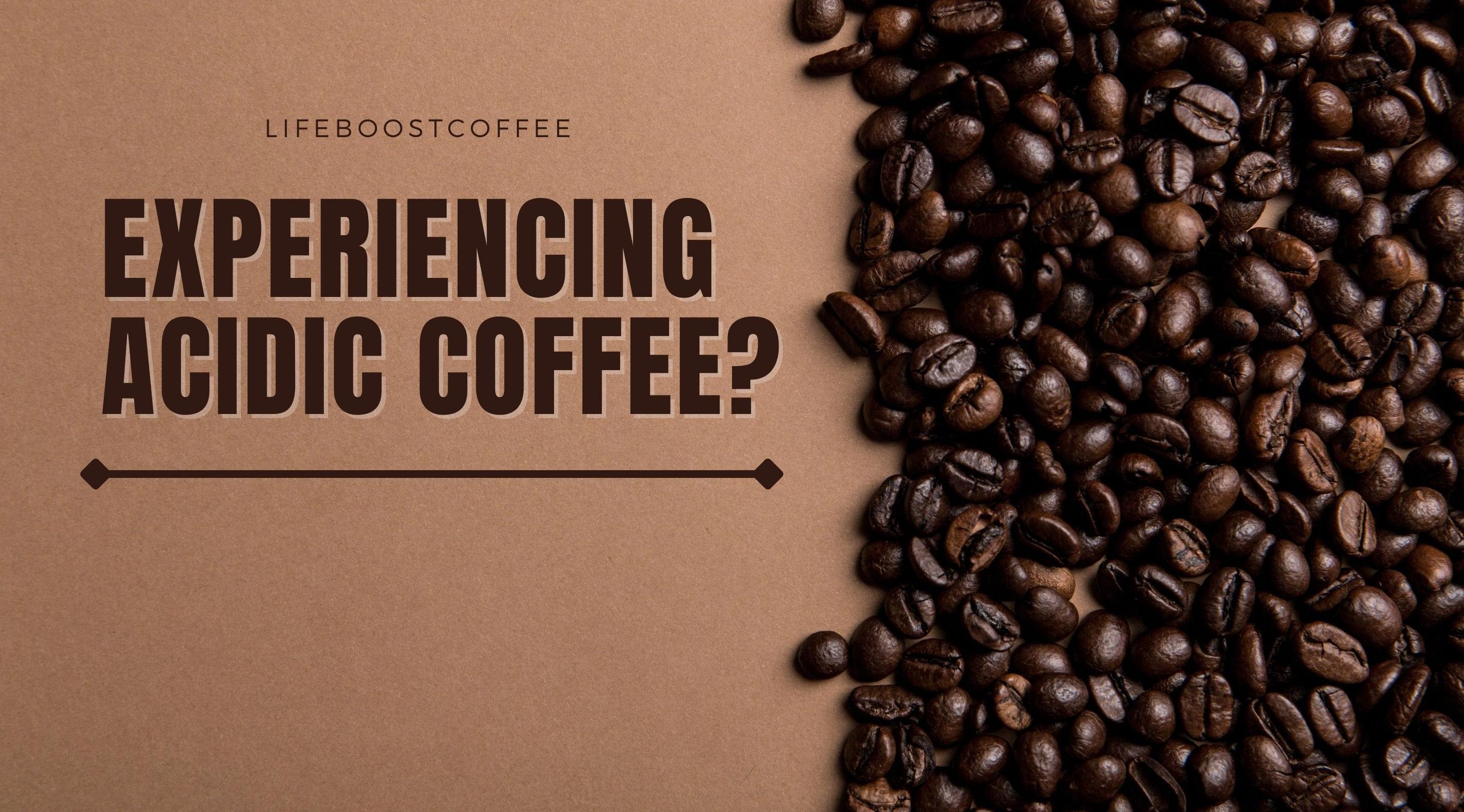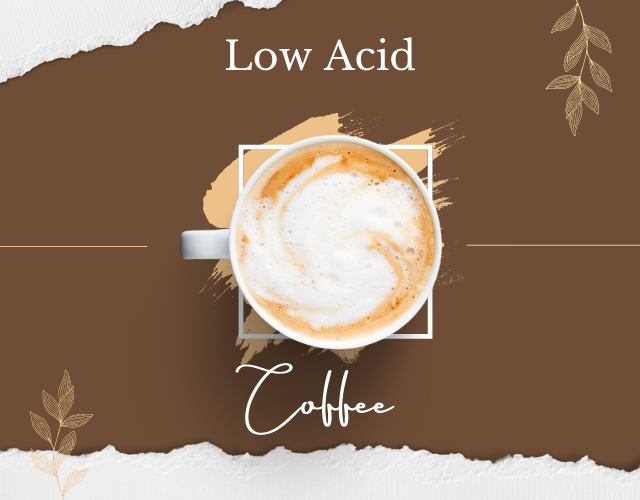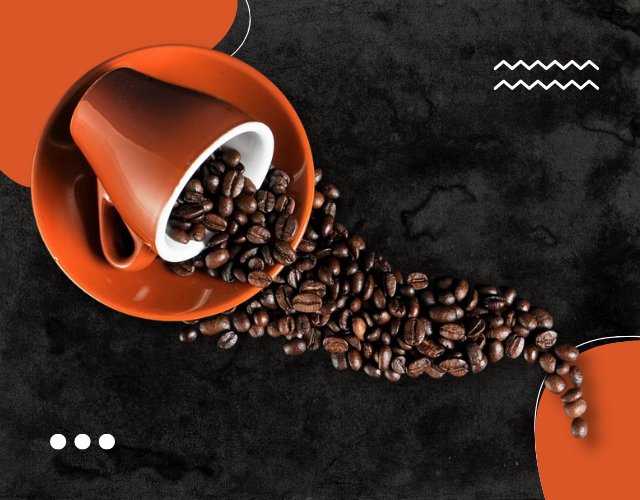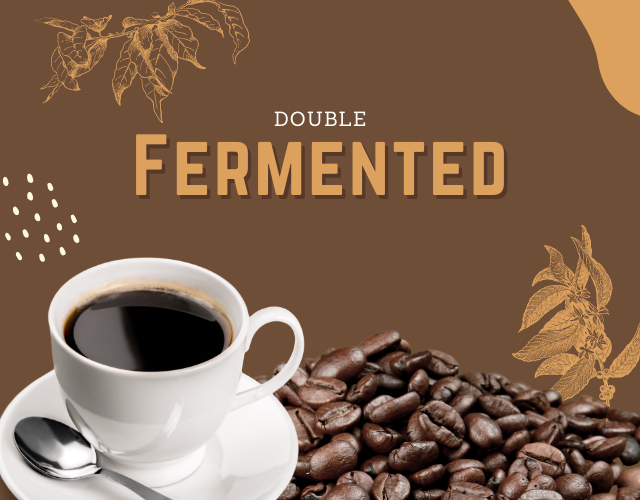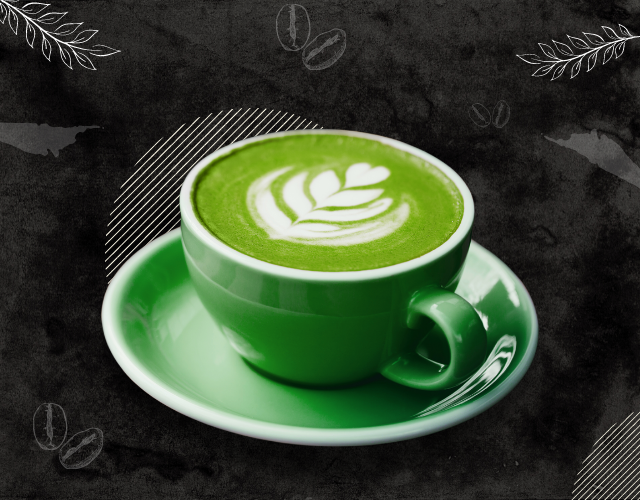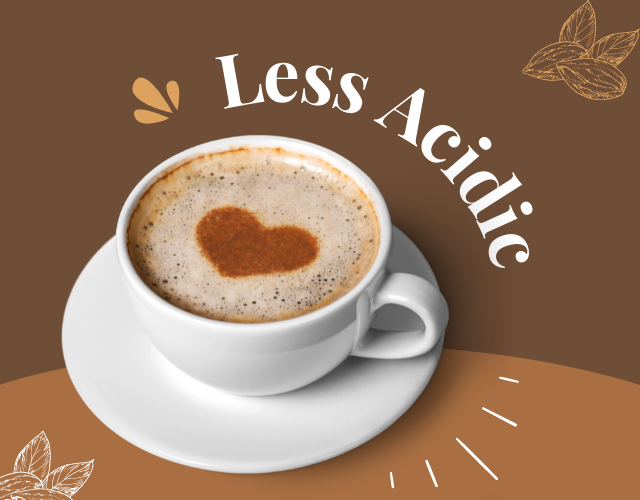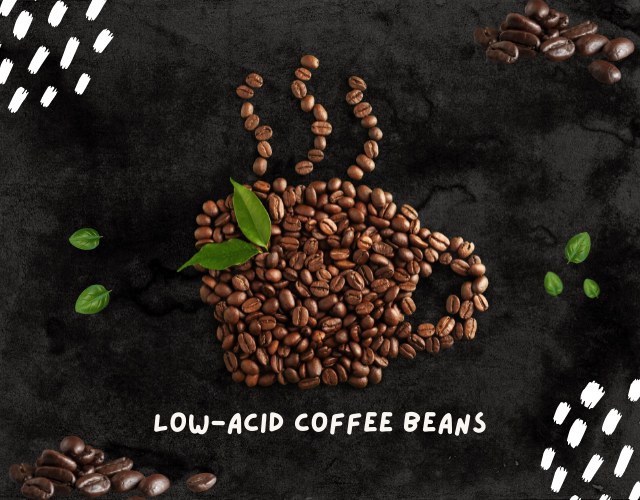Secret Tips to Make Your Coffee Less Acidic
According to the National Institutes of Health, 40% of people in the United States suffer from GERD (gastroesophageal reflux disease). While there are many triggers of GERD, coffee, and more specifically, caffeine has been known to be one of them.
But, that’s not the only reason why low-acid coffee is recommended. While the acidic properties in coffee are fine for most folks, they can aggravate certain health conditions such as GERD, irritable bowel syndrome, and gastric ulcers. But, it doesn’t have to be that way - not if you use these coffee preparation techniques and low-acid coffee brands.
1. What is Acidity in Coffee?
Few people realize this while they’re standing beside a coffee machine, but coffee is a complex bean. Perhaps, one of the most complex beans out there; mainly because just 20% of the coffee bean’s solubles is responsible for that distinctive coffee taste; 70% is non-extractable via brewing, and the remaining 10% isn’t worth mentioning. However, within that 20% of good solubles of the coffee bean are the fruity flavor of coffee and acids.
Most people do not know that there are two types of acids that are found in coffee beans; Quinic acid and Cholorogenic acid. The latter are the good antioxidants that makes coffee “healthy.” The coffee beans may contain more or less chlorogenic acid, depending on the type of coffee bean.
But, much of it is lost during the roasting process. For instance, chlorogenic acids are found in lesser quantities in darker roasts. Similarly, coffee which is grown at higher altitudes tends to be more acidic (aka; contains more chlorogenic acid).
During the roasting process, when much of the chlorogenic acid is broken down (as in, cooked away), we are left with quinic acid. This type of acid is also found in the old or overcooked coffee machines. While coffee beans may contain two types of acids, only one is okay - chlorogenic acid, while the other (quinic acid) is the culprit behind GERD attacks and that sickening “Salty” aftertaste you find in your second cup (from the same pot) of morning Joe.
While it is true that chlorogenic acid can also make you sick, the trick is to balance out both of these acids found in coffee. By now, we found out that there are two types of acids found in coffee beans; one good, and the other - not so much.
We’ve learned that chlorogenic acid is the proverbial “nice guy” of the two and is responsible for the distinctive coffee taste and has all the antioxidants, while quinic acid is either the result of burning your coffee or keeping the brewed coffee for too long and is basically a by-product of chlorogenic acid as it goes through the process of hydrolysis (but that’s for another article). To be fair, too much of even a good thing can be bad for you, as in, both types of the acids found in coffee may trigger acid reflux in some folks.
The water that is used to prepare your cup of coffee can also have an impact on the level of acidity in the coffee brew. This is mainly to do with the alkalinity or PH level of the water. While measuring the PH level runs from 0 to 14, water is a neutral 7. This means, water with a PH that’s lower or higher will have an impact on the coffee’s flavor, but not in the same way. For instance, water with low alkalinity is responsible for an acidic or sour taste.
2. How To Make Low-Acid Coffee?
Coffee enthusiasts tend to distinguish their favorite brews between their level of acidity, bitterness, and sourness. While the first one is essential to the quality (and taste) of the coffee, the others are negative traits. However, the perfect cup of Joe is a combination of acidity and sweetness. That said, "too much acidity is an undesirable trait in coffee, which is why we’re going to learn how to make low-acid coffee."
The truth is, there are plenty of ways in which you can make your coffee less acidic. For instance, the method in which you brew the coffee beans, as in, the time, temperature, and grind size, all make a difference in the level of acidity in a coffee.
A good rule of thumb is to go for a longer steep time, which tends to get you more closer to that acid-free coffee you crave. On the other hand, opting for a coarser grind can also lower the temperature with a longer extraction time to give you the same acid-free taste. If all else fails, you can also add milk to the mix to drop the coffee’s acidic level. However, that last one wouldn’t be the best option if you were lactose intolerant.
3. Can N-methylpyridinium Help?
N-methylpyridinium (NMP), a chemical compound, may provide some insight on the ways you can make coffee that doesn't upset your stomach. According to some studies, coffee with a higher amount of NMP results in the secretion of less stomach acid, implying that there are fewer gastric juices to cause heartburn symptoms.
This prompts the question by many people of why don't we employ NMP as a stomach acid-lowering treatment? It turns out that it isn't quite that easy.
Putting NMP on stomach cells had no impact, indicating that there's more to this, and that the chemicals in coffee are interacting in a sophisticated when it comes to influencing gastric acid secretion.
4. Try a Double-Fermented Variety
According to some studies, the technique by which double-fermented beans are handled also makes a difference in that the coffee is gentler on the stomach. Most people associate probiotics with fermented foods, but coffee prepared in this manner does not contain bacteria that is good for the digestive system.
Coffee is normally fermented only once, but there are some producers that also use another fermentation, which is known as "double soak." This method is also known as a "double Kenya fermentation" since the method is more associated with Kenyan coffee.
The assumption is that the process of double fermentation would eliminate the bitter overtones, while making the brew more pleasant for individuals with digestive problems.
The bitter taste of coffee is caused, at least in part, by the chlorogenic acids found in the bean. However, there is currently no evidence that twice fermenting decreases the quantity of chlorogenic acids or increases the content of NMP, both of which are required to produce coffee that does not result in the production of acid in the stomach.
5. Brewing Green Coffee
Green coffee beans or unroasted coffee beans can also reduce the amount of acidity in a coffee brew. For those of you who do not know, the term "green coffee" refers to those beans which haven’t gone through the roasting process yet.
The chlorogenic acids along with the NMP content of brewed coffee will not be altered if the beans are not roasted, and the outcome will be a coffee that has no effect in decreasing stomach acid production. Furthermore, because to the increased chlorogenic acid concentration, coffee beans that are brewed using green coffee beans could also have a harsh flavor.
6. Other Tips to Make Coffee Less Acidic
But, that’s not all, there are multiple other ways in which you can lower the acidic content in your coffee without having to compromise on taste;
-
Opting for Darker Roasts - This is, by far, one of the best ways of getting coffee that has reduced amounts of acidity. Since darker roasts tend to take more time to cook, it ends up purging out far the bad acid in coffee beans as compared to the lighter roasts.
-
Baking Soda - This is an alkaline which helps to neutralize the acidity in your coffee. This method is also used with salt, although many people prefer to use baking soda.
-
Acid Reducers- For those with high sensitivity to acid, this could be one of the best options on the list. There are a few acid reducers that may get rid of up to 90% of the acidity in your coffee.
-
Paper Filters - Paper filters can collect oils along with keeping much of the acid out of a cup of coffee.
-
Temperature - Higher temperature releases more acidity in the coffee beans. This is why to get coffee that is less acidic, try to use cooler water. Water extracts the acidity from the beans during the brewing process. Because the beans are in the water for a shorter period of time, less acid is released.
-
Water - Water that contains a higher quantity of calcium and minerals than typical water is referred to as hard water. This type of water also lacks salt, which also contributes to coffee's acidity.
-
Natural Alternatives - There are a plethora of low-acid natural coffee blends available. Some supermarket stores carry these specialized mixes, as well as internet merchants. But, you need to shop around to find the best quality.
-
Cold Brew - Coffee brewed with cold water, the acidity of the beans is reduced. Although cold-brew can take 24 hours to produce, it does not remove as much acid since the water is cooler.
-
Try Coarser Grounds - A cold brew might not be what you want during a chilled winter morning. But, that’s not a problem. You can enjoy a hot cup of Joe that’s less acidic by just avoiding finer grinds. For example, you can try coarsely ground beans that are able to brew with less acidity, since coarse grounds are able to secrete less acid in the water during the brewing process.
-
Refrigerate the Pitcher - This is another hack to reduce the amount of acidic content in coffee. Refrigerate the pitcher for at least one night. Place the pitcher in the refrigerator once the coffee is in it and it has been filled with water. Because the coffee must brew for at least 12 hours, it's best to put it in the fridge the night before you intend to enjoy it. You might wish to try different brew times to determine which produces the best-tasting coffee. Start with 12 hours and adjust until the flavor is to your liking.
-
Use Egg Shells - Another unconventional hack to reduce the acidic content in coffee is to brew the coffee along with eggshells. Sure, it sounds strange, but it works. Bring the coffee, water, and eggshells to a boil in a saucepan. In a large saucepan, combine 10 tablespoons of medium-ground coffee, 10 cups of cold water, and 5 smashed empty eggshells.
To bring the mixture to a boil, turn the burner to medium-high. When boiling the coffee, make sure you use a non-reactive pan. While you're waiting for the water to boil, keep the pan partially covered. Cook the mixture for a few minutes. Reduce the heat to medium-low after the coffee mixture has reached a boil.
Allow the pan to boil for 5 to 7 minutes with the lid completely closed. You may need to increase the heat to medium if the mixture isn't simmering. Remove the pan after the coffee grounds have simmered for a few minutes and allow it to settle. Then, use a fine mesh to strain the coffee into a pot.
7. Best Low-Acid Coffee Beans
We mentioned earlier how the types of coffee beans you choose could also have an impact on the acidic level of the coffee, and its taste. For instance, Life Boost Organic Coffee sources coffee beans from the hills of Nicaragua. Grown in just 11% humidity, these coffee beans have no chance of developing toxic microbes or molds, which is why they can be roasted in three different profiles (light, medium, and my favorite dark), and still maintain that rich, fruity and non-toxic profile. So, if you really want the best of both worlds, buy a low-acid dark roast from Lifeboost Coffee.
There are now more low-acid coffee brands accessible than ever before. Whether or whether the coffee is labelled as low acid, there are numerous variables to consider when choosing a low acid coffee. Some characteristics are inherent in the bean, while others are dependent on how it is processed. While you won't be able to find a coffee that is totally acid-free, you can come close.
Make sure the coffee is made entirely of arabica beans. These beans have a lower acid content than robusta beans. Also, seek for beans produced at a lower elevation. Sumatra, Brazil, Nicaragua, and other Central American nations produce low-acid coffees as well.
FAQ's
-
Is Acid-Free Coffee Possible?
Tyler's coffee is the only coffee we're aware of that claims to be acid-free 100 percent of the time. Instead of being acid-free, most coffees are labelled as "low acid." The term "acid-free" refers to a pH level that is neutral. The pH scale runs from 0 to 14, with 7 representing neutrality. The lower the value, the more acidic the solution.
-
Is Decaf Coffee Acidic?
Although decaffeinated coffee is acidic, research has shown that it contains less acidic content as compared to the caffeinated variety. It has been discovered during the extraction process, the amounts of phenolic acid were decreased. Because caffeine causes your stomach to generate more acid, decaf coffee is less likely to induce heartburn and acid problems than caffeinated coffee.
GERD can be worse by a variety of factors, including coffee. Food regurgitation, trouble swallowing, and chest discomfort are some of the symptoms. Although there is presently just one coffee with a pH level of neutral, there are numerous coffee companies that provide a low acid alternative.
Caffeine can cause heartburn and GERD (gastroesophageal reflux disease). Regular coffee is a high-caffeine beverage, with more caffeine than tea or even soda. As a result, decaf coffee may be an alternative for people who want to reduce the amount of heartburn induced by coffee.
For individuals who have been diagnosed with GERD, less acidic coffee may be a better alternative. C caffeine increases the formation of stomach acid, therefore choosing a less acidic coffee bean brand, one or one that contains less caffeine can help to prevent acid reflux.
-
Can You Buy Low-Acid Coffee from the Grocery Store?
We've offered you a low-acid coffee option to try the next time you're craving a cup. The disadvantage is that some of the goods we recommend must be bought online. But what if you're in a hurry and need low acid coffee right away - no shipping, no waiting?
Of course, you go to the grocery shop, where you'll most likely discover a few low acid coffee options to satisfy your taste buds. Whether you are going to Trader Joe's, the grocery store around the corner or online, it’s always best to conduct some research before you go, since items will differ based on the location of your store and the brand.
-
Does the Content of Caffeine Matter?
This is a big question, especially when it comes to making the coffee less acidic. It's no secret that many coffee consumers appreciate the caffeine level of their beverages. It gives you the motivation to get out of bed in the morning and, for some, in the afternoon. When it comes to the effects of coffee on the stomach, though, most studies suggest that caffeine isn't an issue. To level the playing field, some studies that looked at different coffee blends and their effect on stomach acid production used coffees with similar caffeine content. It should be noted here that no matter how much caffeine is in the coffee, the bioactive compounds which are responsible for decreasing or increasing the digestive juices in the stomach could interact with each other.
-
Is Espresso More Acidic Than Coffee?
The short answer is - no Since espresso beans are typically roasted darker than those used to make normal drip coffee, and many of the organic acids in a dark roast are burned away during the lengthier roasting process. As a result, the acid content of the coffee is reduced. Keep in mind that the darker the roast, the lower the level of acidity in the coffee beans.
-
Is Tea More Acidic than Coffee?
A cup of black or green tea will likely have less acidity than a mug of newly brewed coffee. However, much like coffee, the acidity of tea varies depending on the kind and region of origin, thus the answer to this question is dependent on those aspects.
Conclusion
By reading all of the information given above, one thing is clear, the coffee bean is far more complex than we would like to think. This is why there are numerous studies that are being carried out on just how and why certain coffee beans tend to affect people who are suffering with GERD or acid reflux more than others.
The truth is, it is going to take some trial and error to find that perfect coffee bean brand that suits your taste (and your stomach). To be on the safe side, it is always best to do your research and read the label of the coffee grounds you are about to purchase carefully to make sure you get coffee beans that are less acidic, and have the best flavor. As mentioned, you simply can’t go wrong with low-acid dark roast from Lifeboost Coffee.
If all this sounds a little too scientific for your taste, just look up our online shop today to get less acidic options and elevate your coffee drinking experience!
MEDICAL DISCLAIMER
This content is for informational and educational purposes only. It is not intended to provide medical advice or to take the place of such advice or treatment from a personal physician. All readers/viewers of this content are advised to consult their doctors or qualified health professionals regarding specific health questions. Neither Dr. Charles Livingston nor the publisher of this content takes responsibility for possible health consequences of any person or persons reading or following the information in this educational content.
All viewers of this content, especially those taking prescription or over-the-counter medications, should consult their physicians before beginning any nutrition, supplement or lifestyle program.
